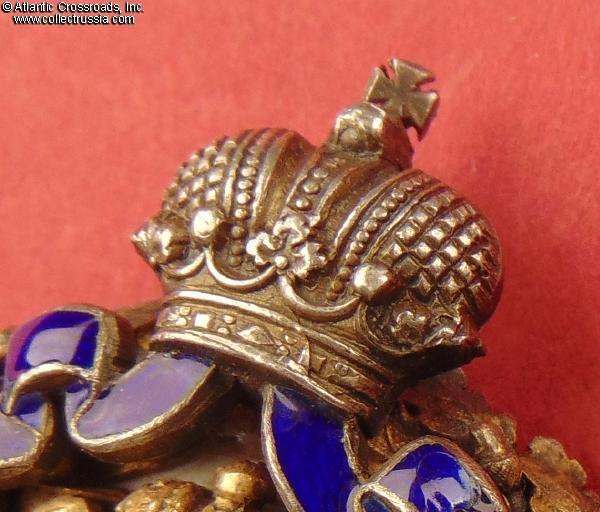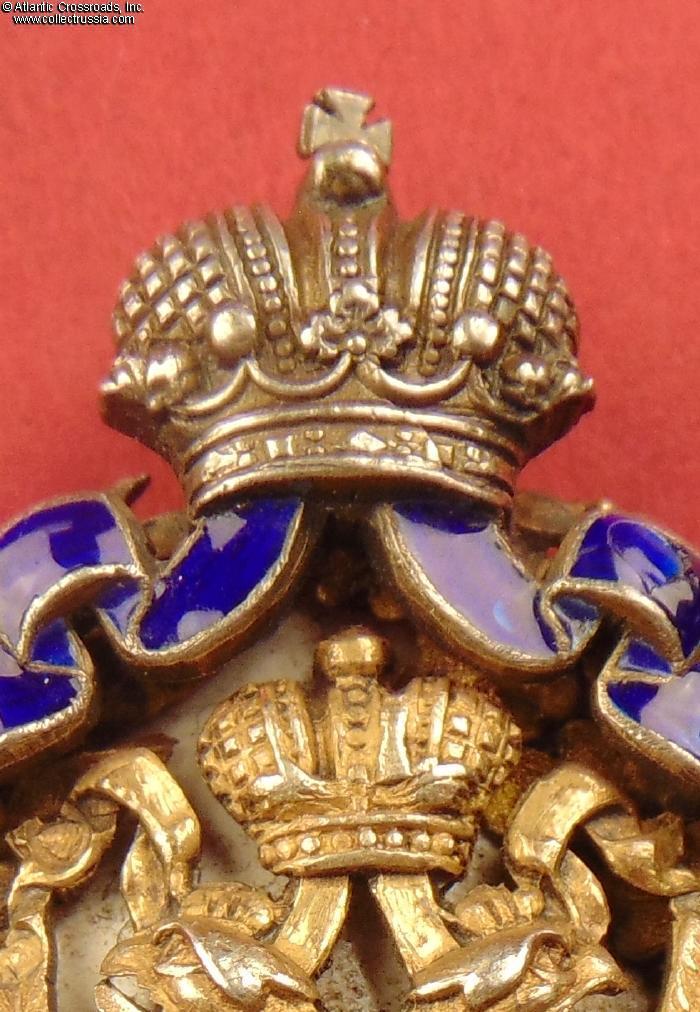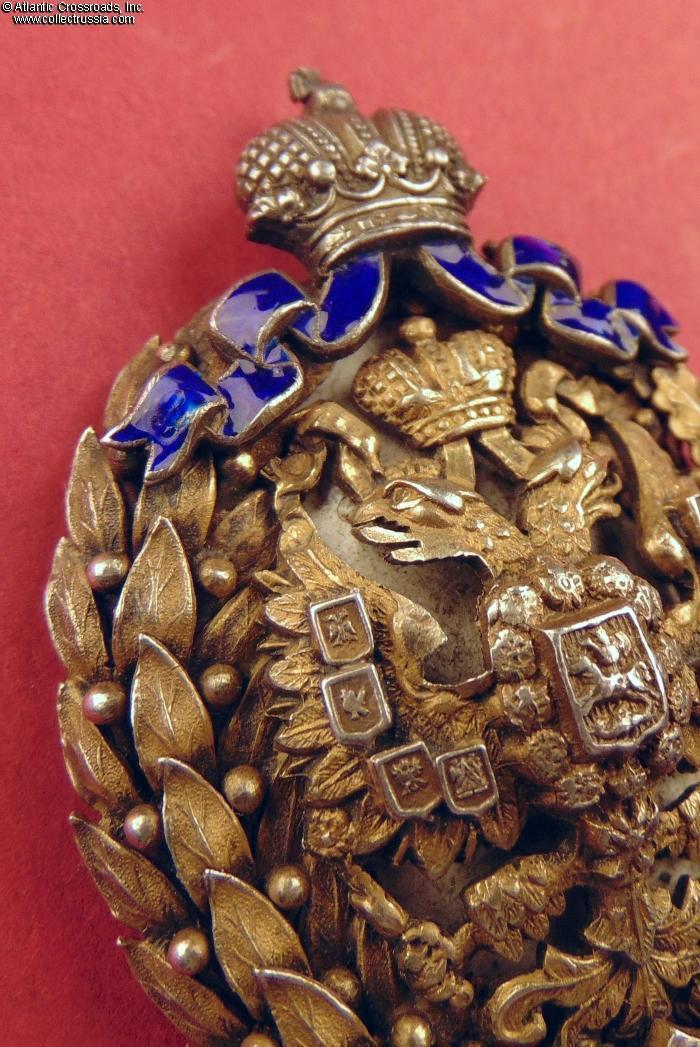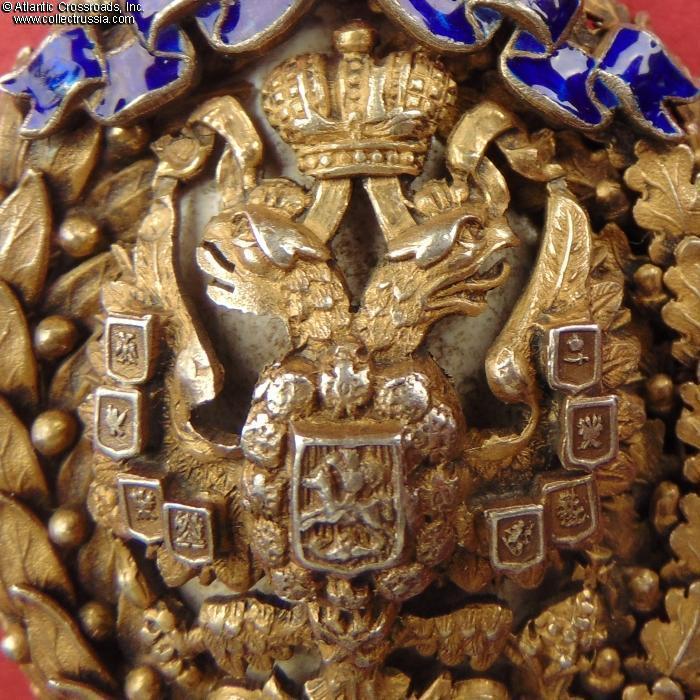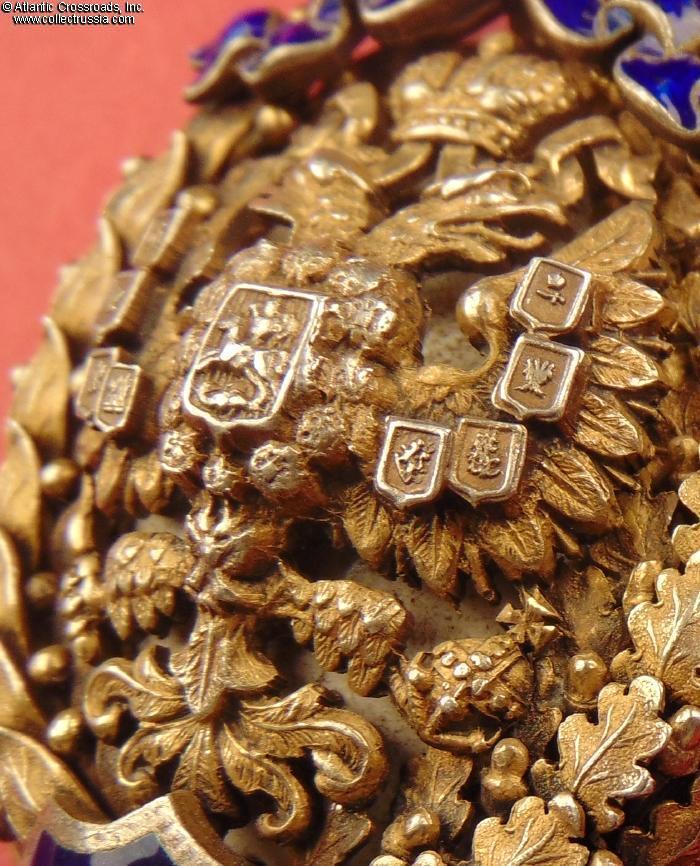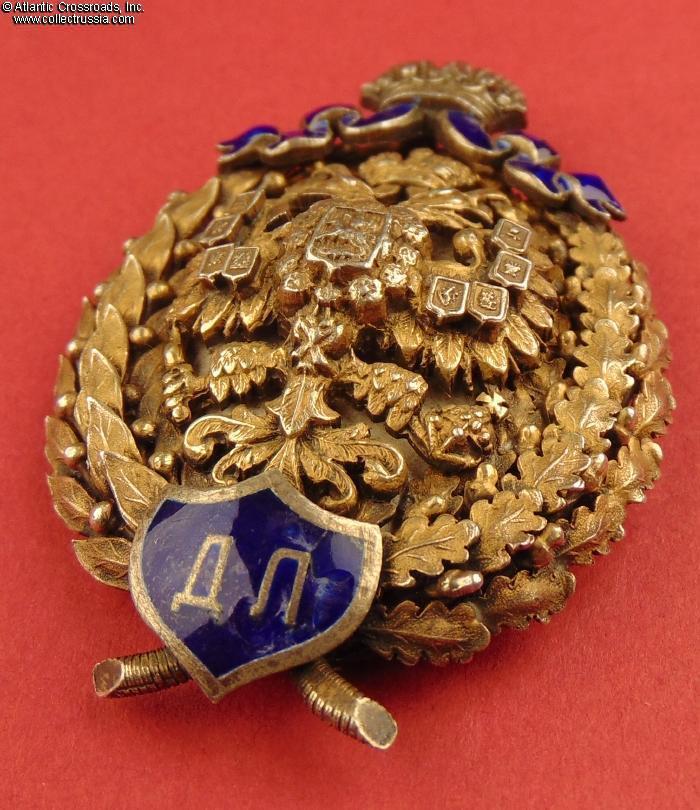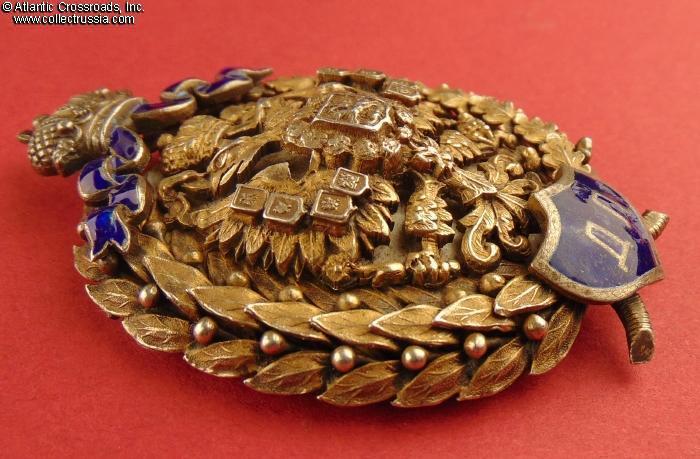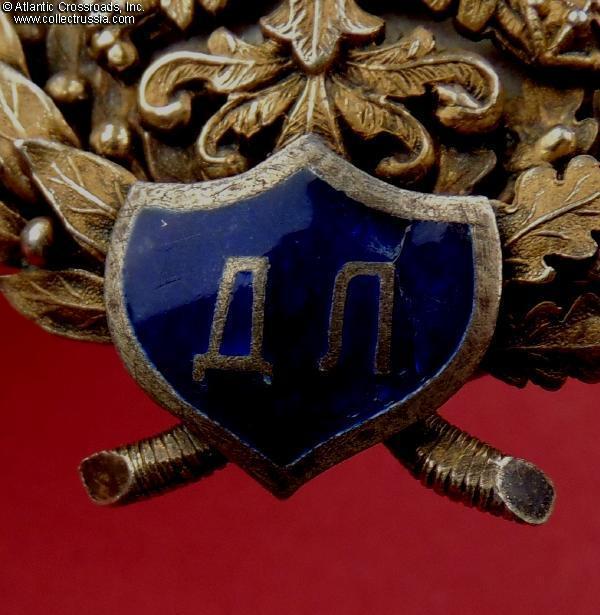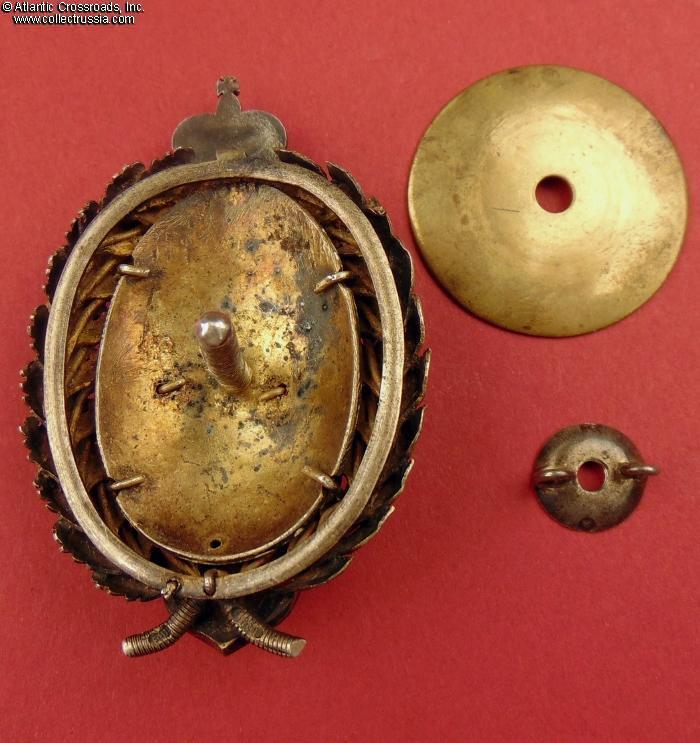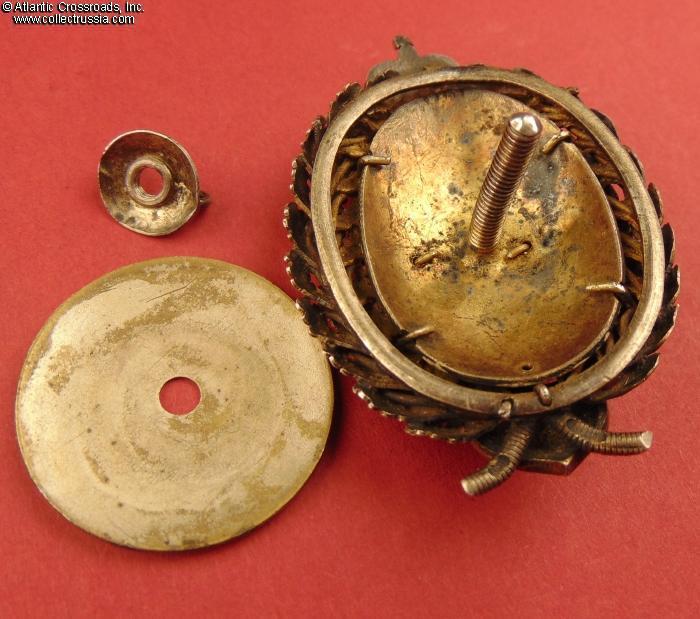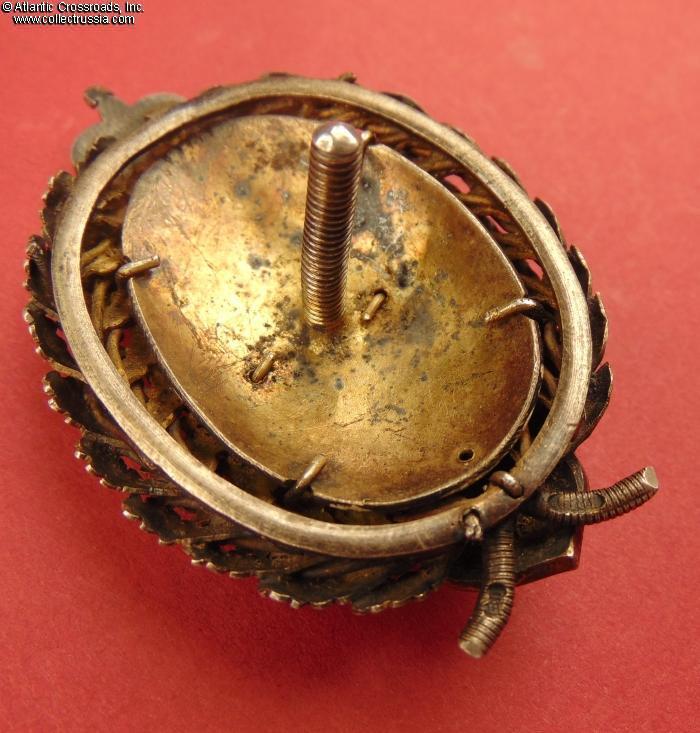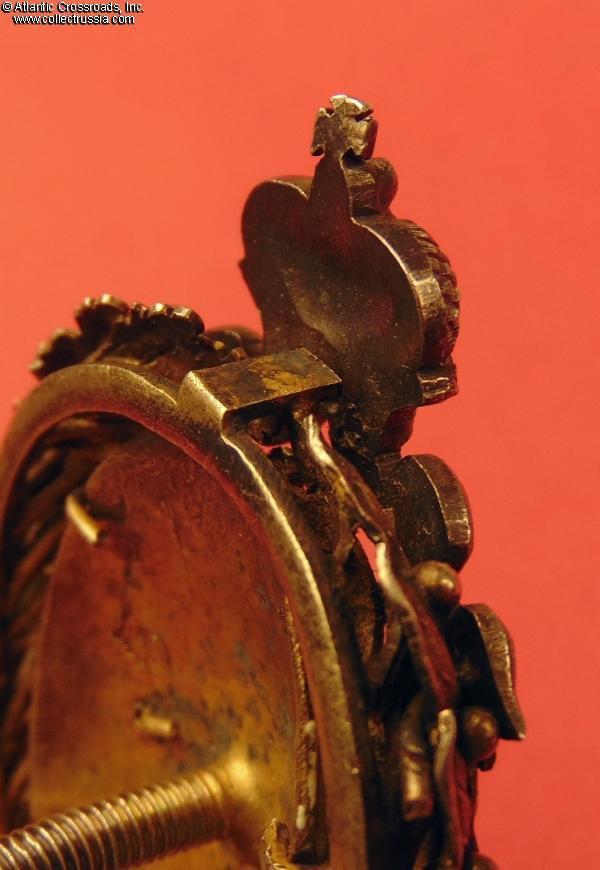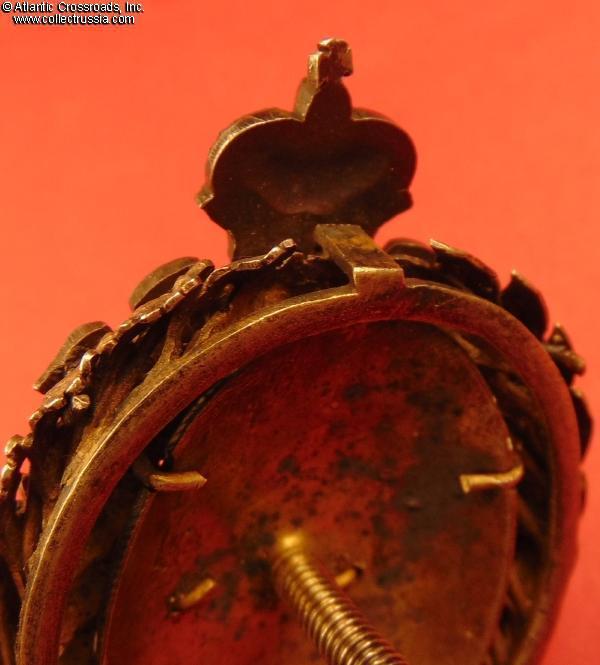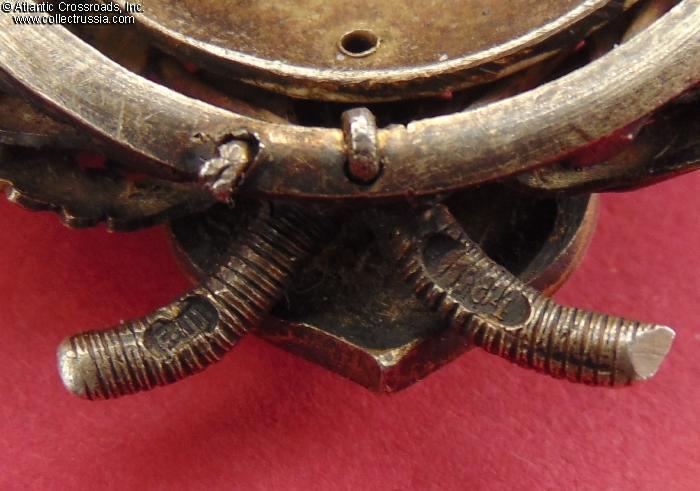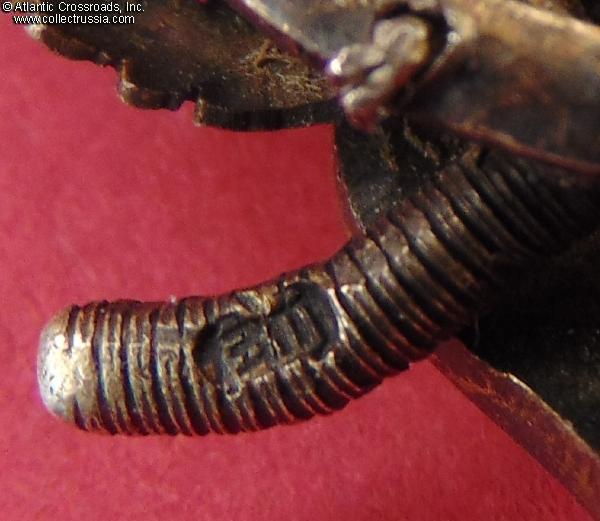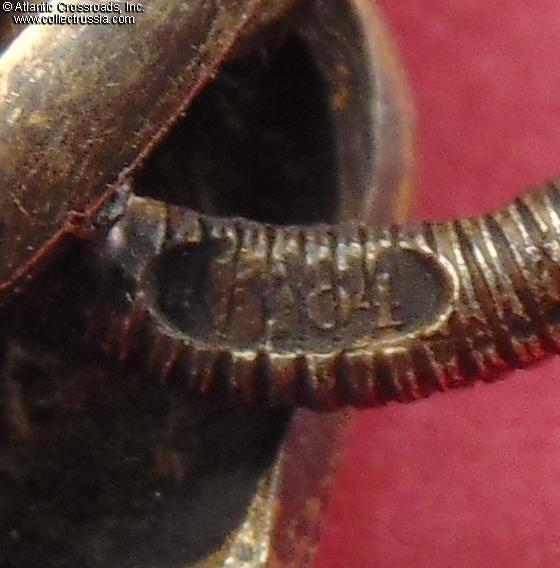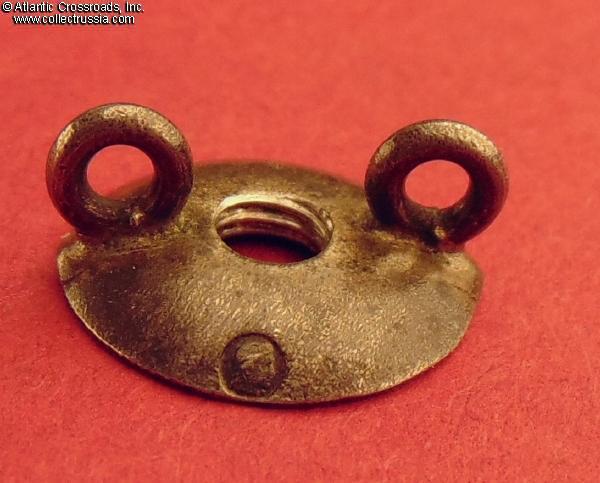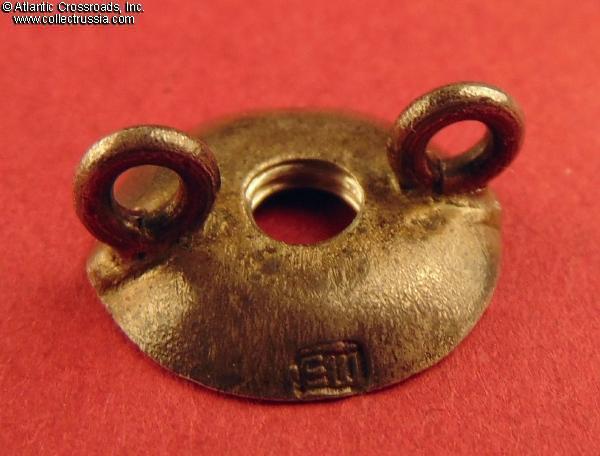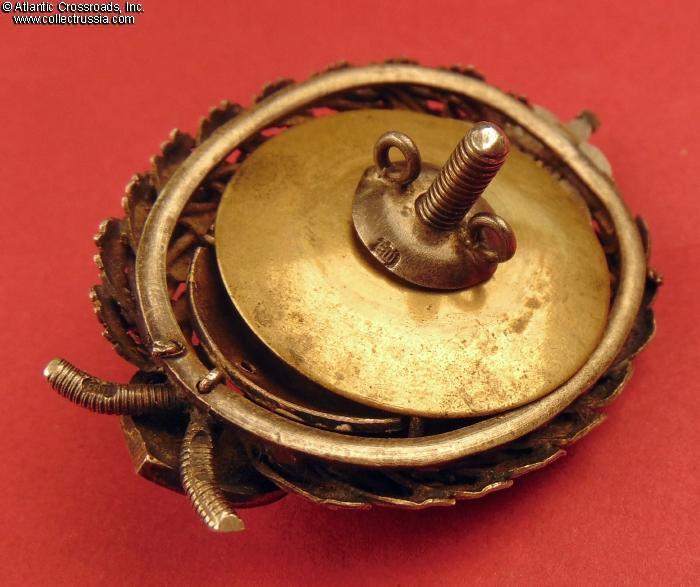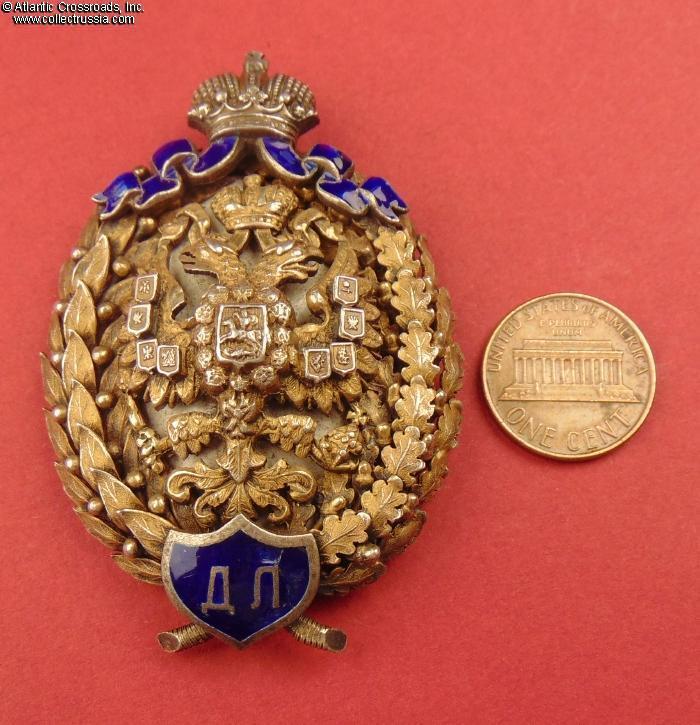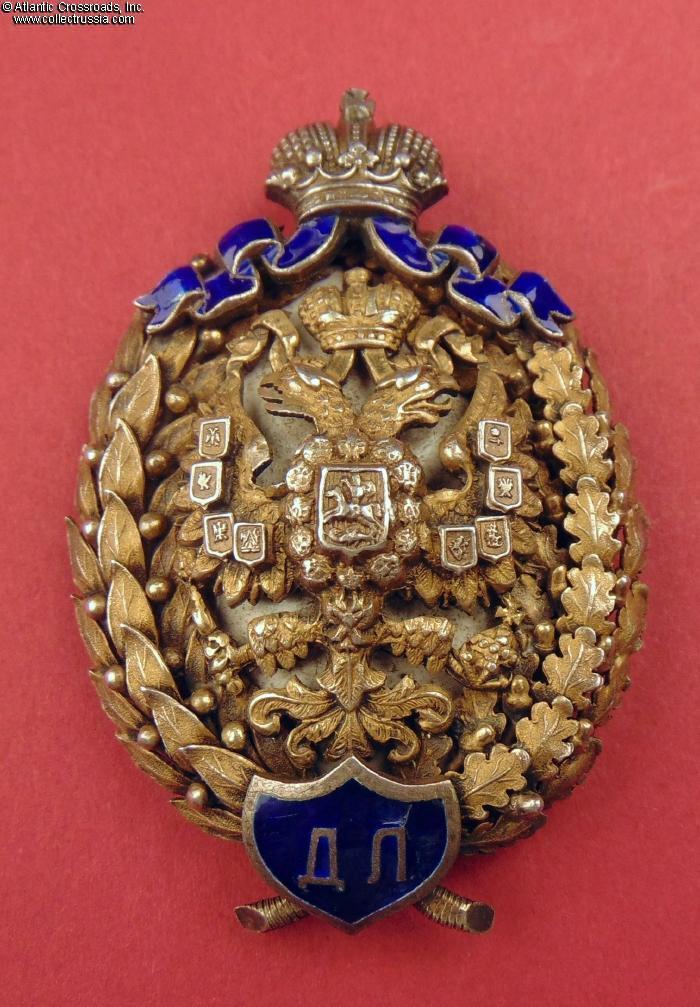
Badge of a Graduate of the Demidov Law School ("Lyceum"), by a St Petersburg maker, 1908-1917.
Silver gilt, enamels; measures 67.0 mm in height, 45.4 mm in width; weighs 48.9 g without the wing nut and washer; overall weight with the washer and nut is 55.4 g. An extremely large and complex piece.
The gilded wreath is formed by intricately interwoven individual oak and laurel leaves applied to an oval piece of silver serving as its "spine"; the massive solid oval base in the center supports the wreath, double-headed eagle, and screw post.
The gilded double-headed eagle national emblem is a separate part executed in meticulous detail in high three-dimensional profi
Silver gilt, enamels; measures 67.0 mm in height, 45.4 mm in width; weighs 48.9 g without the wing nut and washer; overall weight with the washer and nut is 55.4 g. An extremely large and complex piece.
The gilded wreath is formed by intricately interwoven individual oak and laurel leaves applied to an oval piece of silver serving as its "spine"; the massive solid oval base in the center supports the wreath, double-headed eagle, and screw post.
The gilded double-headed eagle national emblem is a separate part executed in meticulous detail in high three-dimensional profile; the provincial coats of arms on the eagle's wings are also separate superimposed pieces, each of them precisely detailed. Equally precise are all other details such as the veins of the leaves, acorns and berries of the wreath, feathers of the eagle, etc. At the top is a sculptured Imperial Crown with enameled blue streamers. At the bottom is a blue enameled plaque with the acronym ДЛ ("DL", for "Demidov Lyceum"). The entire badge is of incredible complexity and beauty, truly a shining example of Imperial Russian craftsmanship.
On the reverse at the bottom left and right ends of the stems of the wreath, respectively, are the Cyrillic hallmark ЕШ ("ESh") of an unknown St. Petersburg jeweler and an "84" silver hallmark with Kokoshnik facing right and clearly legible Greek character Alpha of the St. Petersburg assay inspection.
The badge is in very fine condition, free of glaring flaws. There is a shallow surface chip to the blue enamel on the plaque around the letter "L", but because the damage does not penetrate to the silver beneath, it is not very detractive. There are also a couple of tiny surface flakes on the blue scrolls near the top, almost unnoticeable to the naked eye. Besides that, the enamel is intact and exhibits a very attractive luster. The wreath, eagle and crown are essentially in mint condition: the raised details are exceptionally crips and free of any noticeable wear. The fragile original fire gilt finish is still clearly visible on the eagle and wreath, as well as on the reverse of the badge. The original attachment wires are intact, with the exception of one missing wire at the extreme bottom of the oval central disc - which does not affect the integrity of the badge in the least. The crown with its streamers has a certain degree of "play" along the vertical axes orthogonal to the plane of the badge, but it is in no danger of separating and will remain in place if left undisturbed even when the badge itself is moved. All the other parts are tightly attached. <;p> The screw post is of full length of approx. 23 mm and although slightly bent, remains sound and fully functional. The badge comes with the original silver wing nut showing a small round Kokoshnik hallmark and maker mark "ESh", both matching those on the reverse of the badge. The unmarked washer in gilded silver appears to be of the period and is likely original to the badge.
The Demidov Law School in the provincial Russian city of Yaroslavl was established in 1803 by the prominent Russian industrialist and philanthropist Pavel Demidov (a scion of an extremely wealthy noble family, his fame and influence in Russia can be compared with that of Andrew Carnegie or Cornelius Vanderbilt in the United States some decades later). Initially an uchilishche (mid-level college), the school provided a fairly eclectic three-year course of studies to a small group of talented students, many of whom received full scholarships. Some 30 years later, the Demidov school was transformed into a litsei - the Russian term for "Lyceum", which meant an elite college preparing highly trained state officials - not to be confused with a secondary school in the modern European sense of the word. At the time, the school operated essentially as the Yaroslavl campus of the Moscow University. At first, the lyceum specialized in teaching law as well as economics and finances, but by 1870 it had changed its profile to become purely a law school. At the same time, the school's name changed to Demidov Law Lyceum and its course of studies expanded to four years. It remained a very prestigious establishment until its closure in 1918 during the Russian Civil War (interestingly, the school's students took up arms against the new Bolshevik regime and reportedly fought with exceptional bravery.) The school's graduation badge was established by an imperial edict in 1900. There were two known versions of it; the one offered here, with the letters "DL" on the blue shield, is classified as Type 1 by Patikeev and Bojnovich.
/Patrikeev, Bojonovich, Badges of Russia, Vol. 1, p. 114 fig. 2.22 (top); the maker mark "ESh" can be found in the reference guide Russian Gold and Silverwork from the 15th to 20th Century by Pstnikova-Loseva, fig. 2462/.
Please note, the penny in our photo is for size reference.
$1,395.00 Add to cart

